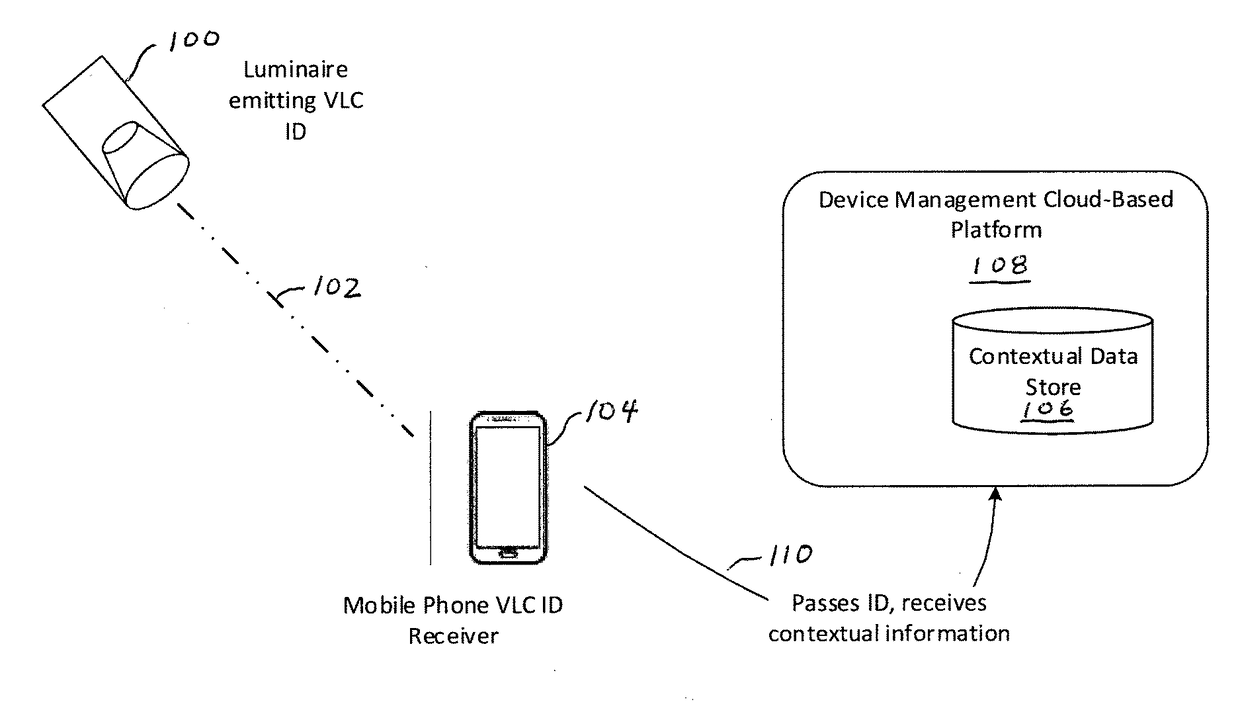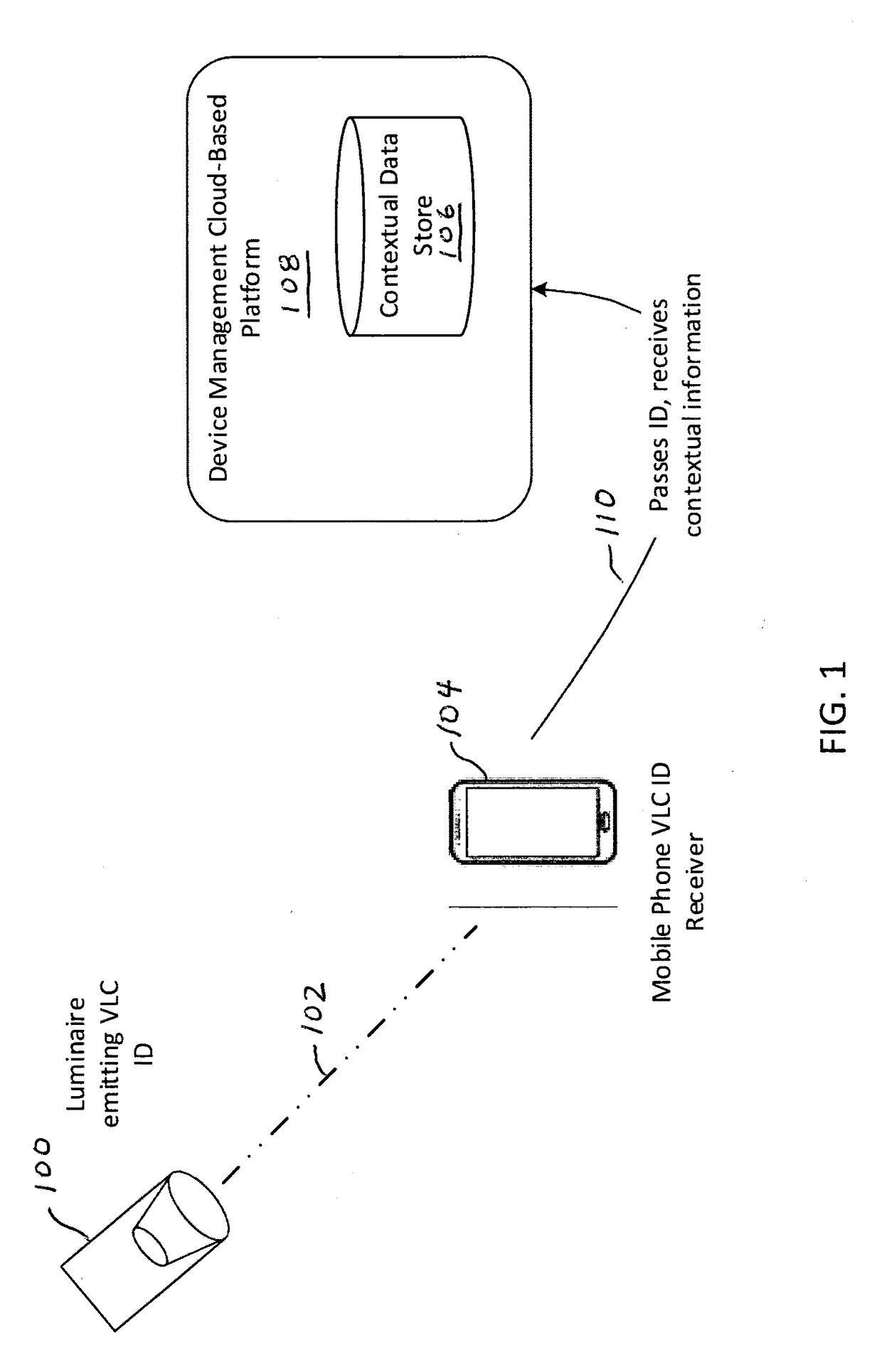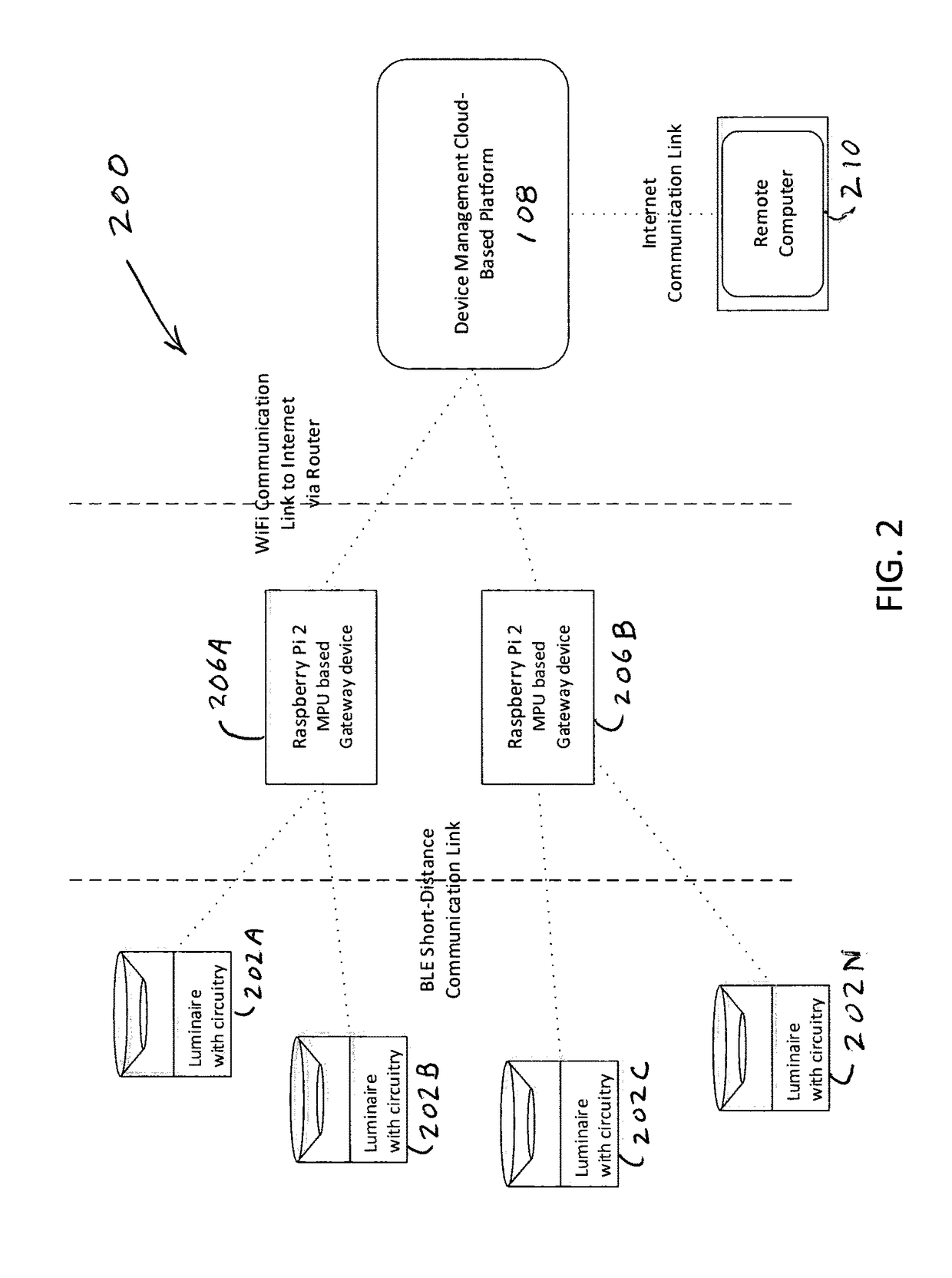Remote controlled LED based id emitter and deployment, and application of same to multi-factor authentication
a remote control and led technology, applied in the internet of things, can solve the problems of reducing the receivable bandwidth of camera-based applications, and achieve the effects of reducing software complexity, increasing the accuracy of the estimate of the id, and reducing the receivable bandwidth
- Summary
- Abstract
- Description
- Claims
- Application Information
AI Technical Summary
Benefits of technology
Problems solved by technology
Method used
Image
Examples
Embodiment Construction
[0055]In FIG. 1, an embodiment a luminaire 100 repeatedly emits a signal transported over light 102, while a receiver 104 (such as, for example, a receiving mobile phone) interprets the signal carried by light 102, which may be visible light. The VLC ID of luminaire 100 so discerned may be passed to a networked data store 106, in a device management cloud based platform 108, via a network connection 110, in order to retrieve contextual information associated with the luminaire's ID, such as the location of the luminaire, from which may be inferred the approximate location of the receiver 104.
[0056]It possible to utilize non-visible spectra (infrared or ultraviolet) for transmitting the VLC ID and other information. Similarly, it is not strictly necessary for the emission of light to be carried out from a light fixture; it could be any container of circuitry and a light-emitting diode. The receiver 104 need not be in the form of a mobile phone, but could be any light-sensitive device...
PUM
 Login to View More
Login to View More Abstract
Description
Claims
Application Information
 Login to View More
Login to View More - R&D
- Intellectual Property
- Life Sciences
- Materials
- Tech Scout
- Unparalleled Data Quality
- Higher Quality Content
- 60% Fewer Hallucinations
Browse by: Latest US Patents, China's latest patents, Technical Efficacy Thesaurus, Application Domain, Technology Topic, Popular Technical Reports.
© 2025 PatSnap. All rights reserved.Legal|Privacy policy|Modern Slavery Act Transparency Statement|Sitemap|About US| Contact US: help@patsnap.com



